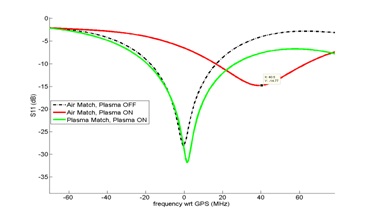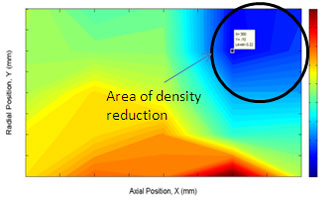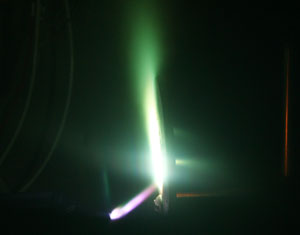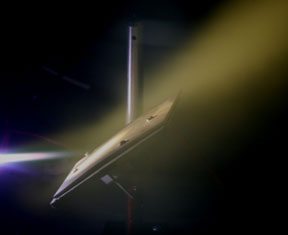Motivation
- Plasma generated around a vehicle traveling at hypersonic velocities can be a significant impediment to fixed frequency communications.
- EDA is currently pursuing two methods to improve signal communication through a plasma:
- Real-time antenna matching to the surrounding plasma (HyPASS)
- Localized plasma density reduction (ReCOMM)
- Critical technology for hypersonic cruise missile program and follow-on systems:
- This weapon system will depend on GPS navigation for accurate targeting over long ranges
- Also would dramatically improve the radio blackout issue during re-entry of space vehicles
Approach
- Use combination of plasma diagnostics and antenna matching technology to dynamically match the vehicle antenna to the changing local plasma environment.
- Use the application of electric and magnetic fields to reduce the plasma density over the antenna, effectively punching a hole through the plasma layer.
- Both approaches can be used in combination to achieve a better solution than either technology alone.
Results
- Density Reduction of up to 80% of initial value
- Estimated 5-10 dB signal improvement with antenna matching as well as providing plasma diagnostics – density, collision frequency, and plasma width
- Expected 25 dB or better improvement in signal reception






Leave a Reply
You must be logged in to post a comment.